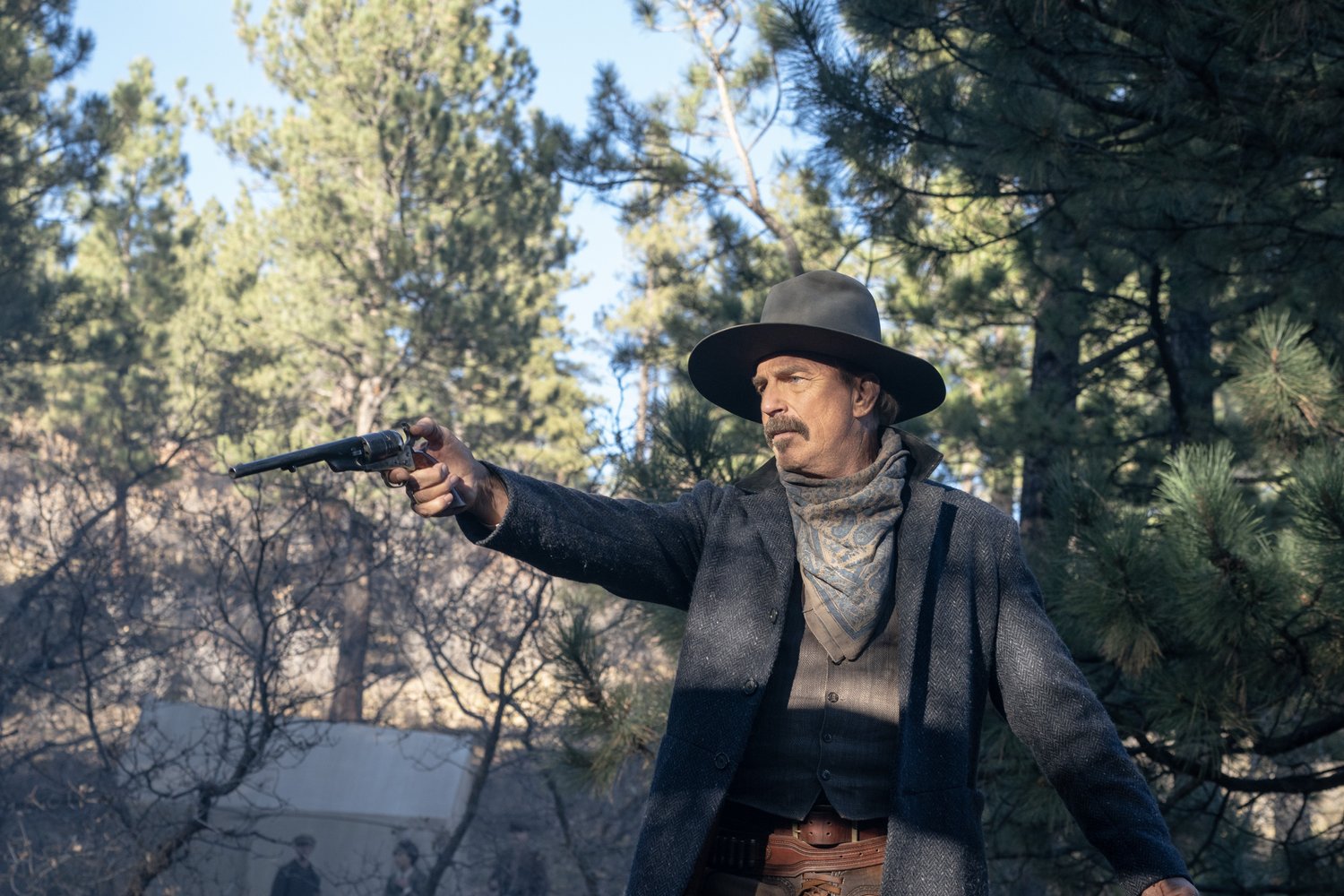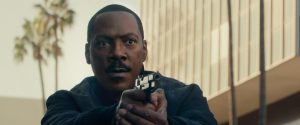Images courtest of Warner Bros. Pictures
HORIZON: AN AMERICAN SAGA: CHAPTER 1— 4 STARS
By golly, there’s something satisfying about watching an expert working in their element at a high level. They could be a laborer doing their job perfectly or an master artist flowing fully and freely within their given medium. At this stratum, to really appreciate what you’re seeing before your eyes, the observer needs to, at the very least, understand the medium and the artist in question. That is compulsory and, it needs to be said, the semi-restrictive provisions to approach Kevin Costner’s Horizon: An American Saga: Chapter 1.
As meritorious an example of its storied genre, the three-hour Horizon: An American Saga: Chapter 1 is not an appropriate toe-dipping litmus test for novices or casual fans to find out if they like Westerns or not. That’s handing a newly 21-year-old kid a hearty single-malt 15-year-old scotch whisky neat and telling them that is what all drinking is going to be like. No, an experienced and discerning palette is required to consume Costner’s engulfing tome. Buyer beware.
LESSON #1: LET KEVIN COSTNER COOK– Learned appreciation is the gauge because this is a proven great coming back to the successful medium he adores to make his magnum opus. In recent years, ardent cinephiles tossed bouquets covering Hollywood streets for Martin Scorsese’s hospice bedtime story of The Irishman and Steven Spielberg’s personalized nostalgia of The Fabelmans and gushed to call them summations of their distinguished careers. Those some devotees of cinema need to let Kevin Costner have his too, three or four parts be damned.
This first stage of Horizon: An American Saga earnestly introduces the intertwined destinies of multiple sectors of people in the 1860s. All are pointing their proverbial compasses towards an advertised area of land for community development in the San Pedro Valley of Arizona dubbed “Horizon.” Unrecognized by the land speculator H. Silas Pickering (a mostly unseen Saving Private Ryan’s Giovanni Ribisi) printing and distributing the tantalyzing flyers, Horizon is located at a vital river crossing in Apache Native American hunting grounds, a fact the first initial surveyors find out tragically in the opening scene of the film.
LESSON #2: THE DEFINITION OF A SAGA– While that impetus may sound reasonable as a connective glue, one cannot help but notice the emphasis of “Saga” in the titling of Horizon: An American Saga: Chapter 1. The word illustrates a heroic narrative and a long-detailed account. Blame the school teacher writing here who has played too much Beyond Balderdash, but I cannot help but turn “saga” into an acronym: Several Angles Going Aimlessly. That last word of the acronym is the struggle, as viewers must be prepare endurance for setting transitions and unknotted threads on the billowing tapestry.
Even with three crude gravemarkers hammered into the dirt as a warning, new Horizon settlers kept coming and, by 1862, a bustling tent village made a foothold. Among these new residents is the Kittredge family comprised of James (Tim Guinee of The Staircase), his wife Fran (the second-billed Sienna Miller of American Sniper), and their two children Lizzy and Nate (striking newcomers Georgia MacPhail and Costner’s youngest son Hayes Costner). While numbers and enthusiasm are high, the nearby Apache are still the stronger faction as they merciously raze Horizon to the ground one fateful night.
Coming to the charred settlement’s aid are the nearby U.S. Army forces led by First Lt. Trent Gephardt (Avatar franchise star Sam Worthington) and Sgt. Major Thomas Riordan (Guardians of the Galaxy national treasure Michael Rooker) working under the authority of Col. Houghton (go-to authority figure actor Danny Huston). They bury the dead and take the survivors to their nearby Camp Gallant stronghold. With profit and vengeance in mind, an offshoot group of Gephardt’s men and Horizon survivor Elias Janney (Jurassic World: Dominion baddie Scott Haze) form a posse venturing out to acquire lucrative Apache scalps to sell.
Elsewhere from this innermost geography of Horizon: An American Saga: Chapter 1 are additional storylines of folks with various motivations trying to get to Horizon. Matthew Van Weyden (a seasoned and strapping Luke Wilson) leads a wagon train of homesteaders on the Santa Fe Trail trying to share responsibilities and maintain order and spirit. Costner himself arrives an hour into the film as Hayes Ellison, a veteran hired hand who is fleeing for Horizon with a Wyoming town prostitute he just met named Marigold (supermodel turned actress Abbey Lee) and a two-year-old toddler after he guns down one of a gang boss’s loquacious and trigger-happy two sons (Jamie Campbell Bower of Fantastic Beasts: The Crimes of Grindelwald and Animal Kingdom’s Jon Beavers) when they were pursuing Marigold’s cabinmate Ellen (Jena Malone, recently of Love Lies Bleeding) for an old family beef.
If you’re now lost or overwhelmed, refer back to that SAGA acronym and refocus. The strongest arcs of Horizon: An American Saga: Chapter 1’s are the connected happenings closest to the Horizon site itself. Led by touching performances from Sienna Miller, Georgia MacPhail, Michael Rooker, and Sam Worthington, the merging of the Kittredge family’s plight with the camp’s stoic soldiers, the looming pull of the Civil War back east, and the nearby clashes between pursuring trackers and the defending Apaches builds a very poignant and galvanizing dramatic nucleus. The sweep of John Debney’s handsome and rich score hoists the mood of these scenes magnificently.
Everything else, especially Kevin Costner’s own portion with Hayes, has its serrated edges and occasional grandeur but feel, at this point, too far away from the desired center destination. With three more chapters, Horizon: An American Saga will necessitate faith in the filmmaker and patience to slow ourself to the series’s methodical pace. Fortunately, the film even at its faintest is a visual widescreen feat, where Costner’s Open Range cinematographer J. Michael Muro soaks in every topographical fleck and radiant sunbeam the impressive and imposing Utah shooting locations had to offer.
LESSON #3: THE AFTERMATH OF DEATH– If there is a second emotional theme germinating alongside–and even ahead of–the Manifest Destiny-fueled acts of migration, it is the fortitudinal decisions made in the aftermath of death. Many traditional Westerns are built with suspenseful anticipation towards a showy climactic showdown of righteous comeuppance delivered by justified violence. Once that cinematic powder keg blows, the falling action is usually swift and the credits roll quickly. Horizon: An American Saga: Chapter 1 bucks that shortchanging of resolution to dwell within that mindset.
In the film Costner has scripted with Jon Baird and Silverado’s long-lost writer Mark Kasdan (his first feature film writing credit in 36 years), incidents of death happen early and within a palpably brutal ecosystem of man vs. man violence that has spanned generations. Choices made to attack or avoid obstacles and opponents, creating a multi-layered emphasis—both on the side of the settlers and that of the Apache (represented by Killers of the Flower Moon‘s Tatanka Means and The Revenant stuntman Owen Crow Shoe—of who stays in these lands, who leaves, and the burdensome morals of why. Those hefty decisions, seen with different concentrations and risks throughout the various plot angles, either forge or fracture the chosen fates of groups living and dying together for their precious slivers of hallowed habitat.
LESSON #4: THE DRAW OF WESTERNS– Hot damn, that earthbound yearning rings every bell of a true Western! Incomplete as it is, the attention Horizon: An American Saga: Chapter 1’s paid to personal recovery mirroring the pioneering momentum of new establishment encapsulates the wide-eyed draw of this film genre. The greatest Westerns have been the morality tales where uncertain hope challenges and conquers wrought and melodramatic pain, all in the name of altruism and heroism. The scope of this first chapter (and the closing sizzle reel where Debney’s score takes over for a dynamite montage of future events) affirms Kevin Costner is steering something special down hallowed paths.
LOGO DESIGNED BY MEENTS ILLUSTRATED (#1212)



